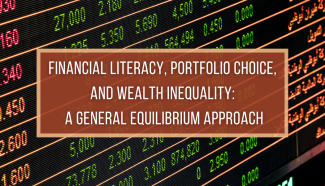
Min Kim writes a paper on Financial Literacy, Portfolio Choice, and Wealth Inequality.
Abstract: I develop a general equilibrium model in which households allocate their wealth to safe and risky assets (“bonds” and “stocks”) and accumulate financial literacy to raise their risk-adjusted stock returns. Calibrated to match financial literacy and stock market participation rate of U.S. households, the model demonstrates that a policy subsidizing financial literacy acquisition increases short-run stock investments. In equilibrium, however, the resulting aggregate capital growth lowers the average equity premium, thereby moderating the subsidy’s impact. The policy mitigates wealth inequality by inducing heterogeneous portfolio adjustments across the wealth distribution. With the subsidy, the middle wealth quartiles acquire more financial literacy and shift their portfolios toward stocks. The top quartile attains its maximum literacy level prior to the subsidy and shifts toward bonds to compensate for lower stock returns. The ratio of total wealth held by the top quartile versus the rest of the population decreases.
Kim, Min. 2023. “Financial Literacy, Portfolio Choice, and Wealth Inequality: A General Equilibrium Approach.” University of Pennsylvania Population Center Working Paper (PSC/PARC).